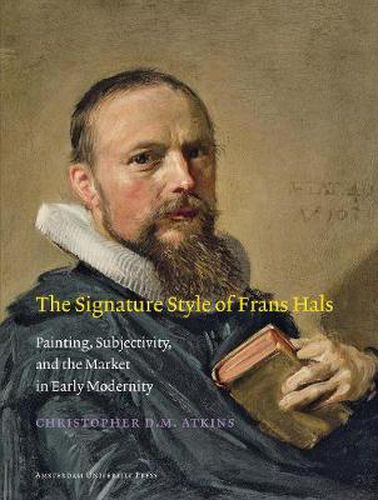Readings Newsletter
Become a Readings Member to make your shopping experience even easier.
Sign in or sign up for free!
You’re not far away from qualifying for FREE standard shipping within Australia
You’ve qualified for FREE standard shipping within Australia
The cart is loading…






This richly illustrated study is the first consider the manifold functions and meanings of Hals’s distinctive handling of paint. Atkins explores the uniqueness of Hals’s approach to painting and the relationship of his manner to seventeenth-century aesthetics. He also investigates the economic motivations and advantages of his methods, the operation of the style as a personal and workshop brand, and the apparent modernity of the artist’s style. The book seeks to understand the multiple levels on which Hals’s consciously cultivated manner of painting operated for himself, his pupils and assistants, his clients, and succeeding generations of viewers. As a result, the book offers a wholly new understanding of one of the leading artists of the Dutch Golden Age, and one of the most formative painters in the history of art in the Western tradition. It also provides a much needed interrogation of the interrelationships of subjectivity, style, authorship, methods of artistic and commercial production, economic consumption, and art theory in early modernity.
$9.00 standard shipping within Australia
FREE standard shipping within Australia for orders over $100.00
Express & International shipping calculated at checkout
This richly illustrated study is the first consider the manifold functions and meanings of Hals’s distinctive handling of paint. Atkins explores the uniqueness of Hals’s approach to painting and the relationship of his manner to seventeenth-century aesthetics. He also investigates the economic motivations and advantages of his methods, the operation of the style as a personal and workshop brand, and the apparent modernity of the artist’s style. The book seeks to understand the multiple levels on which Hals’s consciously cultivated manner of painting operated for himself, his pupils and assistants, his clients, and succeeding generations of viewers. As a result, the book offers a wholly new understanding of one of the leading artists of the Dutch Golden Age, and one of the most formative painters in the history of art in the Western tradition. It also provides a much needed interrogation of the interrelationships of subjectivity, style, authorship, methods of artistic and commercial production, economic consumption, and art theory in early modernity.